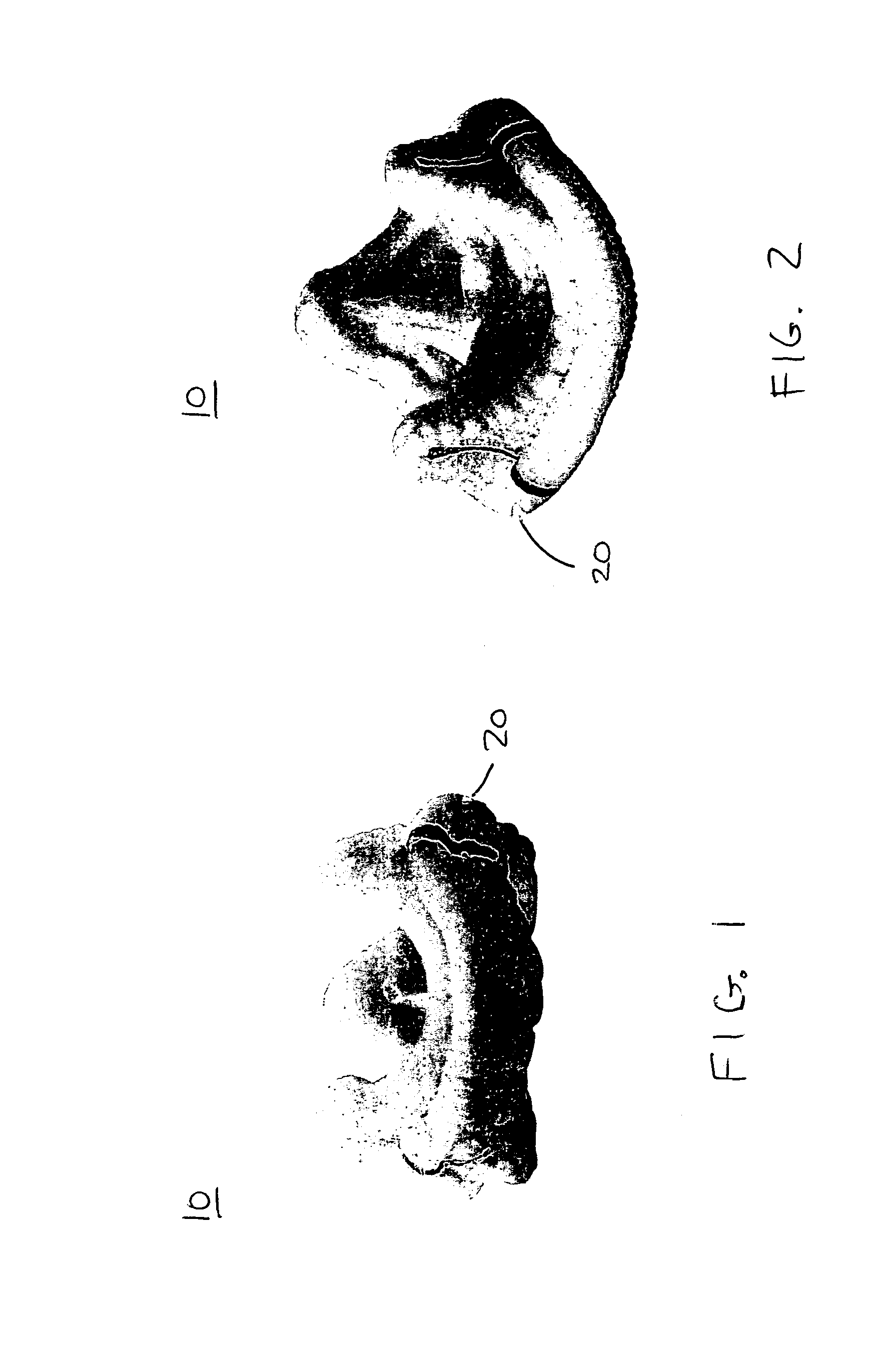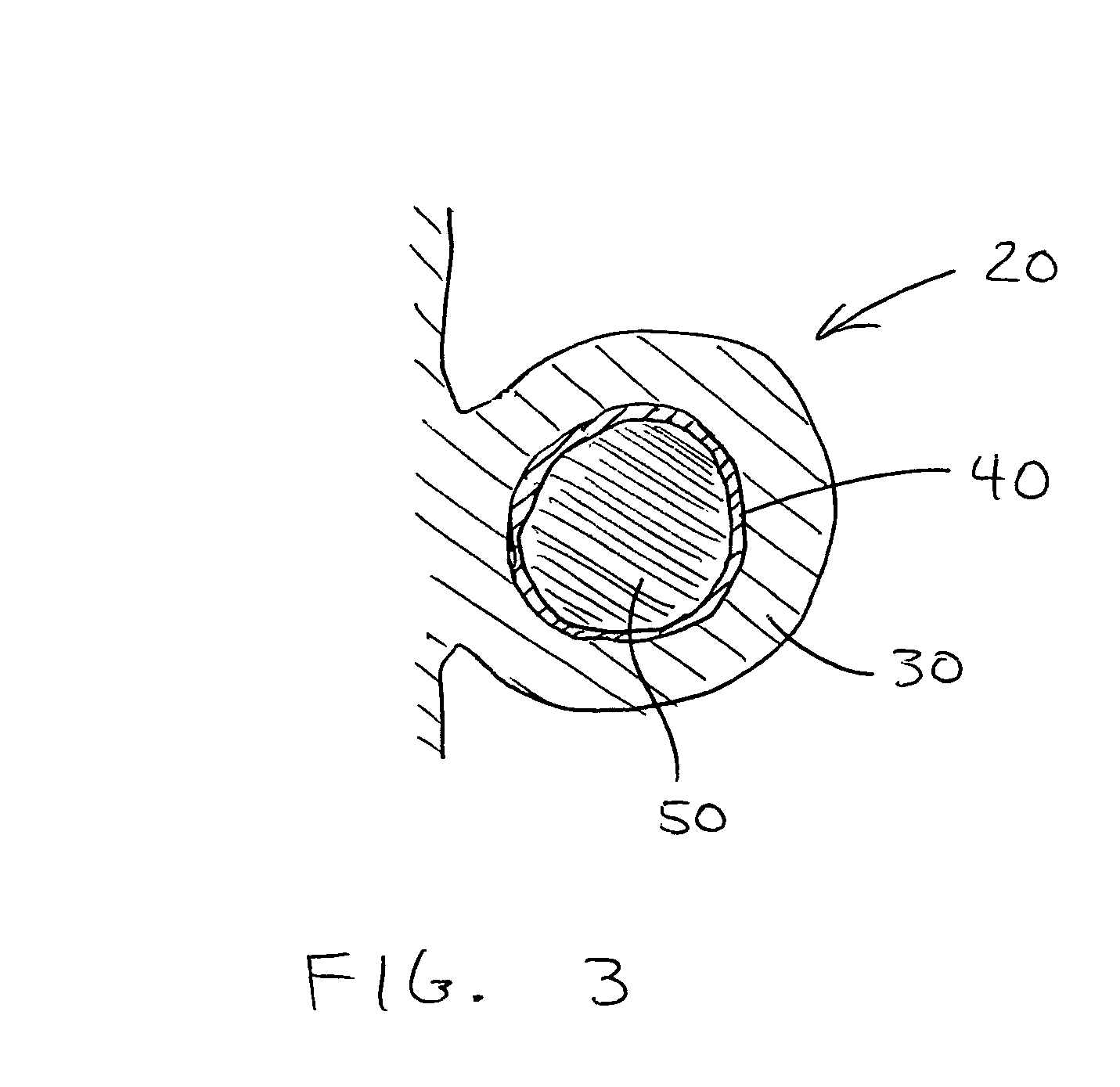Prosthetic heart valves
a heart valve and prosthesis technology, applied in the field of prosthetic heart valves, can solve problems such as thromboembolism (te), and achieve the effects of smoothing the cuff surface, reducing the possibility of thromboembolism, and improving the blood compatibility of the cu
- Summary
- Abstract
- Description
- Claims
- Application Information
AI Technical Summary
Benefits of technology
Problems solved by technology
Method used
Image
Examples
Embodiment Construction
[0011]An illustrative prosthetic heart valve 10 that can be constructed in accordance with the invention is shown in FIGS. 1 and 2. Heart valve 10 is a tissue valve, but it will be understood that it could alternatively be a mechanical valve. One of the features of heart valve 10 is sewing cuff 20, which projects radially outwardly from the remainder of the valve, and which extends annularly around the outside of the valve. Sewing cuff 20 is typically used to suture the valve into the patient. In particular, a suture needle (not shown in FIGS. 1 and 2) is typically used to pass one or more strands of suture material (not shown) through sewing cuff 20 and adjacent tissue of the patient to hold the valve in place in the patient. Alternatively, other means of attachment such as staples, hooks, etc., may be used to attach sewing cuff 20 to adjacent tissue and thereby secure valve 10 in the patient.
[0012]At least the outer layer of sewing cuff 20 is typically a biocompatible, porous fabr...
PUM
 Login to View More
Login to View More Abstract
Description
Claims
Application Information
 Login to View More
Login to View More - R&D
- Intellectual Property
- Life Sciences
- Materials
- Tech Scout
- Unparalleled Data Quality
- Higher Quality Content
- 60% Fewer Hallucinations
Browse by: Latest US Patents, China's latest patents, Technical Efficacy Thesaurus, Application Domain, Technology Topic, Popular Technical Reports.
© 2025 PatSnap. All rights reserved.Legal|Privacy policy|Modern Slavery Act Transparency Statement|Sitemap|About US| Contact US: help@patsnap.com



